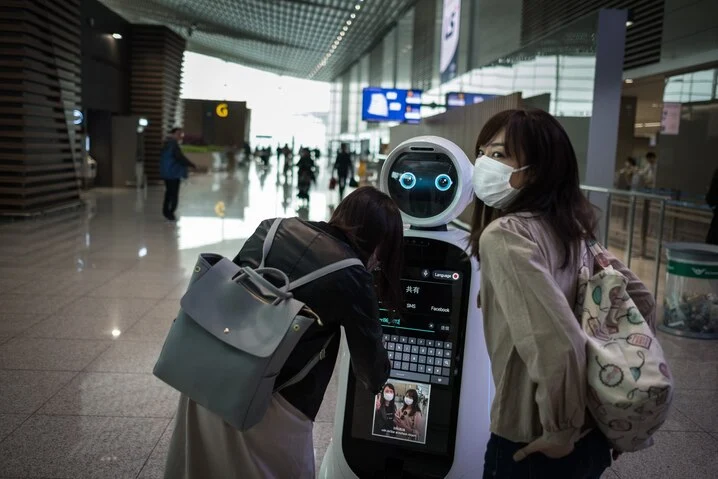Aircraft cabin layout has always been about making the most of available space. One of the winning ideas at the 2021 Crystal Cabin Awards proposed turning the middle aisle into a row of desks arranged like a coffee shop, giving passengers greater room to work or study while in flight. Four people can sit at a table in the University of Cincinnati's Coffee House Cabin idea. During takeoff and landing, all seats swivel towards the front, and the table wings fold down for safety.
Flying experience will be tailored to every passenger:
Airbus has developed an additional award-winning idea called Airspace Cabin Vision 2030, which gives customers more personalization options and freedom during their journey. Business travelers may enjoy swivel seats, secluded spaces for families, and even bunk beds with the AI-controlled cabin design. During the booking process, customers will have a range of alternatives to choose from, including interactive windows, workstations, cozy seating, and even a sports section.
All-electric planes will fill the skies:
No emissions by 2050, all-electric aircraft should be the norm, especially for shorter-haul travel. Many businesses and organizations are now working on constructing e-planes: large corporations like Airbus and NASA, as well as smaller businesses and startups like Eviation, magniX, Wright Electric, Electric Air, and Ampaire. Elon Musk has even made mention of his intention to build an e-plane.
Planes will boast panoramic windows, massage seats, sound showers, and more:
Airbus predicts that in 2050, passenger jets will have top deck viewing decks with panoramic windows that offer amazing 360-degree views and can instantly switch to opaque screens. Additionally, according to the European Aerospace Corporation, future airplanes will have ergonomic memory foam massage seats that double as vitamin and drink dispensers and harness body heat to power in-flight amenities.
Hyperloop transport systems will slash journey times:

The company successfully completed the first passenger trip at the Nevada desert Hyperloop test site in November 2020. The 1,640-foot (500-meter) test track was completed in 15 seconds by the company's CTO Josh Giegel and Director of Passenger Experience Sara Luchian, traveling at a speed of 107 miles per hour (172 km/h). The pods are expected to reach a top speed of about 620 miles per hour (1,000 km/h) in the future.
A pod transport system that will zip around our cities:
What's the best part? In a way, this is like an extreme form of Uber, where passengers may request a pod on demand to adjacent stations. Renowned investors such as India's Reliance Industries and former Google chairman Eric Schmidt support SkyTran, which aims to construct lines in the United Arab Emirates, Israel, France, India, Germany, Indonesia, Malaysia, the United Kingdom, and the United States.
Driverless flying taxis and buses will be everywhere:
A plethora of startups and more established businesses are already vying to open the first air taxi service in history, and by 2050, buses and flying taxis akin to the Jetsons are probably going to be commonplace. These so-called electric vertical takeoff and landing (eVTOL) vehicles, which are safer, more affordable, environmentally friendly, and more efficient than traditional helicopters, have the potential to completely change the tourism industry.
FAQs
What are 5 inventions and advancements that assisted with travel?
The wheel, the cruising transport, the steam motor, the car, and the plane are five critical innovations that helped with movement by giving proficient, quick, and versatile vehicle techniques, opening up open doors for investigation, exchange, and globalization.
What are some innovations of the plane?

The advancement of the stream motor and the reception of lamp oil based fly fuel upset aeronautics, giving the vital capacity to longer, quicker flights. Advances, for example, fly-by-wire flight controls, autopilot frameworks and far reaching airport regulation frameworks further developed avionics security and proficiency.
What are the new innovations at Boeing?
Satellite designs ease up with innovative utilization of added substance fabricating. A Boeing group plans a 3D-printed, metallic satellite design to bring down the parts count, decrease gathering time and take out optional work.



